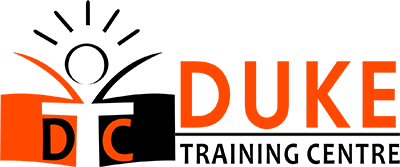AZ-305T00: Designing Microsoft Azure Infrastructure Solutions Course Overview
The expert-level training course AZ-305T00: Designing Microsoft Azure Infrastructure Solutions is designed for IT professionals who wish to improve their abilities in creating scalable, dependable, and secure infrastructure solutions using Microsoft Azure services. Governance, computation, non-relational and relational data storage, data integration, application architecture, networking, authentication, authorization, monitoring, business continuity, and migrations are just a few of the many topics covered in this course. Students will participate in both theoretical lectures and hands-on labs throughout the course, applying their knowledge to real-world case studies. After completing the course, participants will have a thorough understanding of Azure infrastructure design practices and principles. This will help them to design solutions that satisfy a range of business requirements and prepare them for the AZ-305 certification exam. The course’s emphasis on networking, data integration, and application architectures guarantees that students will be prepared to tackle the intricacies of today’s cloud infrastructure problems.
Course Prerequisites
In order to guarantee an effective learning process in the AZ-305T00: Designing Microsoft Azure Infrastructure Solutions course, it is ideal for participants to possess the following minimal requirements:
- A basic comprehension of cloud concepts and Azure services.
- Practical knowledge of Azure, including resource deployment and management.
- Knowledge of general IT functions, including data platforms, virtualization, networking, identity, security, business continuity, and disaster recovery.
- Familiarity with Azure administration and proficiency with the abilities covered in the AZ-104: Microsoft Azure Administrator course.
- Knowledge of virtual machines (VMs), virtual networking, and virtual hard disks as examples of on-premises virtualization technologies.
- Understanding of virtual private networks (VPNs), firewalls, TCP/IP, DNS, and encryption technologies in network configuration.
- Knowledge of the Kerberos protocol, Lightweight Directory Access Protocol (LDAP), domains, forests, domain controllers, replication, and other Active Directory concepts.
- Comprehension of disaster recovery and resilience, including backup and restore procedures.
These requirements are meant to serve as a starting point for the instruction. However, since there is more learning support and resources available to help you with your training, we encourage motivated learners who are eager to expand their Azure expertise to actively engage with the course materials.
Target Audience for AZ-305T00: Designing Microsoft Azure Infrastructure Solutions
Professionals who want to become experts in designing Azure infrastructure solutions—which include data storage, governance, and other topics—should take the AZ-305T00 course.
- Architects of Solutions
- Engineers for the Cloud
- Azure Infrastructure Experts
- IT experts with knowledge of Azure
- Engineers in DevOps using Azure
- Technological Decision-Makers thinking about cloud computing
- Systems Administrators interested in becoming Azure specialists
- Business Architects
- Managers of technology in charge of cloud migrations
- Developers interested in learning about Azure application infrastructure design
- Data engineers who specialize in the Azure framework
- Security experts in charge of Azure compliance and governance
- Professionals getting ready to earn the Azure Solutions Architect Expert certification from Microsoft
Learning Objectives – What you will Learn in this AZ-305T00: Designing Microsoft Azure Infrastructure Solutions?
Introduction to Learning Outcomes and Concepts Covered:
Students who complete the AZ-305T00 course will be prepared to design solutions in the Microsoft Azure environment that address governance, compute, storage, data integration, application architecture, security, monitoring, networking, business continuity, and migration.
Creating a Governance-Friendly Design
Learn how to use Azure policies and initiatives to create governance frameworks that comply with organizational compliance and security standards.
Discover how to use Azure Management Groups and subscriptions to create management hierarchies.
Create Computational Solutions:
Learn how to choose and use the right Azure compute solutions, like virtual machines (VMs), application services, and container-based services.
Consider scalability, performance, and cost when optimizing compute resources.
Design for Application Architectures:
Architect solutions that leverage Azure services for high availability, resiliency, and scalability.
Integrate microservices and serverless components in application designs.
Create Systems for Relational and Non-Relational Data Storage:
Choose the appropriate Azure data services, such as Cosmos DB and Blob Storage, for non-relational data.
Relational database services, such as Azure SQL Database and Azure Database for MySQL, should be planned and configured.
Create a Solution for Data Integration:
Utilize Azure Data Factory and Azure Synapse Analytics to implement data integration patterns and architectures.
Create a Solution for Application Architecture:
Build dependable application architectures that include API management, event-driven systems, and messaging.
Create Authorization and Authentication Systems:
Create security plans utilizing Managed Identities, OAuth, OpenID Connect, and Azure Active Directory.
Create a System to Track and Record Azure Resources:
To gain insights into the health and performance of your applications, configure monitoring solutions with Azure Monitor, Log Analytics, and Application Insights.
Create a Solution for Network Infrastructure:
To ensure connectivity and security, create networking topologies using Azure Virtual Network, VPN Gateway, and Azure ExpressRoute.
Create a Solution for Business Continuity:
Utilize Azure Site Recovery and Azure Backup to plan for high availability and disaster recovery, ensuring that business operations are unaffected by disruptions.
Create a Migrating Solution:
Plan and carry out on-premises to Azure migration procedures, making use of tools such as Azure Migrate to ensure a smooth transition.
To strengthen the application of concepts in real-world scenarios and improve the practical understanding of Azure infrastructure design principles, labs and case studies are included in each module of the course.

Testimonials
Duke Training Centre Unique Offerings
Online Instructor Led
With the convenience of your home or workplace, you can learn from our knowledgeable trainers online.
Classroom Training
In-person instruction in a physical classroom with maximum interaction at our five-star training facilities.
Schedule Dates
01 November 2024
01 November 2024
01 November 2024
01 November 2024



 Duration
Duration Language
Language Batch Options
Batch Options Upcoming Batch
Upcoming Batch






